Bret Bielema believes there’s a specific moment on every recruiting visit in which something said or done shapes the prospect’s future path.
When Russell Wilson visited Wisconsin in June 2011, he faced a decision not only between schools (Wisconsin vs. Auburn) but sports (football vs. baseball). He had produced a good career as NC State‘s quarterback, but was also a fourth-round pick of the Colorado Rockies in the 2010 MLB draft. He wanted to see how far he could go on the diamond. NC State’s coaches wanted Wilson to commit to football, so they eventually released him.
Bielema, then Wisconsin’s coach coming off of a Big Ten title in 2010, desperately needed a quarterback. Before Wilson left Madison, Bielema left him with a parting thought.
“When he was leaving, I looked at him and I said, ‘Listen, if you don’t come to Wisconsin, go to Auburn, because the game of football needs you. College football needs people like you, and you’re going to be a great one,'” recalled Bielema, now head coach at Illinois. “I said that hoping I didn’t just push him to Auburn, but in reality, it drove him to us because he knew what he was getting into. He knew the profound effect he could have.”
Wilson joined Wisconsin June 27, 2011, as a graduate transfer with immediate eligibility. In announcing Wilson’s arrival, Bielema noted the move was “unusual” for a program rooted in player development, but added, “This is a special situation and Russell is the type of player and person that fits very well with our team.”
That fall, Wilson led Wisconsin to another Big Ten championship and produced the best quarterback season in team history — 3,175 pass yards, 33 touchdowns, four interceptions, 73% completions, a nation-best 191.8 passer rating and 338 rush yards and six touchdowns. He earned first-team All-Big Ten honors and was a finalist for the Maxwell Award.
Wilson was not the first graduate transfer — the NCAA implemented the policy in 2006 — but became the most prominent, a nod to both his talent and his position. Over the decade since, a number of other players began taking advantage of the flexibility, including several quarterbacks who didn’t see an upward path with their original teams.
Bielema didn’t know much about Wilson at NC State, where he had 8,545 pass yards and 76 touchdowns, and earned All-ACC honors in three years and ACC Rookie of the Year honors in 2008. He knew even less about baseball, joking, “I don’t know an ERA versus an IRA.” But when Paul Chryst, the team’s offensive coordinator, told Bielema about a two-sport star interested in leaving NC State, he grew interested.
Wisconsin needed to replace quarterback Scott Tolzien, and health issues had depleted its quarterback room for 2011. Auburn had a similar idea after losing Heisman Trophy-winning quarterback Cam Newton from its national championship team in 2010.
Bielema began watching film of Wilson.
“I literally thought to myself: ‘How could anyone ever let this person leave?'” Bielema said.
Bielema’s belief in Wilson — and outlook for Wisconsin’s season — only intensified after spending time with him in Madison. He also surveyed Wisconsin’s overall offense, which included nine starters who would become NFL draft picks during the next three years.
“All we were missing was a quarterback,” Bielema said. “Like, if we didn’t get him, we probably were a team that would struggle to make a bowl game. He instantly changed the dynamics of University of Wisconsin football in that year, but also gave us our second straight Big Ten championship. He affected the legacy of that program for a long time.
“If you can get a difference-maker at a key position, you’ve got a new free agency that’s never been experienced before.”
Graduate transfers represented Phase I of college football’s free agency era, now dominated by the transfer portal and the one-time exemption for non-graduate transfers to move without sitting out. Wisconsin took another graduate transfer quarterback in 2012, Maryland‘s Danny O’Brien, who didn’t pan out.
But Wilson wouldn’t be the first graduate transfer quarterback to help sustain or elevate programs. Bielema hopes his new team at Illinois gets a boost this fall from quarterback Brandon Peters, who transferred in 2019 after graduating from Michigan.
“If you bring in a grad transfer, they have to bring extreme value as a player but also extreme character value,” Bielema said. “They’ve got to represent everything you believe in and want, because you’re getting them on the back end of their career, rather than the front end, so you’ve got to understand what they are already.”
To mark the 10-year anniversary of Wilson’s game-changing transfer, we’re examining the top 10 graduate transfer quarterbacks since Wilson in 2011. These are not quarterbacks who took the traditional transfer route and sat out a year (Oklahoma‘s Baker Mayfield and Kyler Murray), or those who capitalized on increasingly lenient waivers (Ohio State‘s Justin Fields). Quarterbacks who started off in the FBS, went to a junior college and then returned (Virginia‘s Bryce Perkins) also aren’t eligible. These are strictly quarterbacks who graduated from their original school before transferring.
My ranking prioritized those who won or contended for national awards, or led their teams to national success, as well as those who thrived for multiple seasons after transferring.
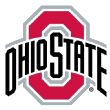

Original school: Ohio State (2015-17)
Burrow arrived on the Bayou as a mystery man, never able to leapfrog J.T. Barrett or Dwayne Haskins for field time at Ohio State. He left as Joe Burreaux, author of perhaps the greatest quarterback season in college football history. There likely will never be a graduate transfer quarterback more impactful than Burrow at LSU, given the program’s underachievement at the position. In 2018, Burrow won the starting job and went 10-3, becoming the first LSU player to eclipse 2,500 pass yards and 350 rush yards in a season. He guided the Tigers to four wins against top-10 opponents and a Fiesta Bowl championship.
Still, Burrow wasn’t pegged to blow up the way he did in 2019. He set NCAA single-season records for both touchdown passes (60) and total touchdowns (65) while becoming the first SEC player to pass for at least 5,000 yards and 50 touchdowns. Burrow set almost every SEC passing record and posted the second-highest completion percentage (76.3) in NCAA history. He led LSU to a perfect season, accounted for 14 total touchdowns in CFP wins over Oklahoma and Clemson, and swept all the national awards, including the Heisman Trophy.
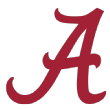

Original school: Alabama (2016-18)
Hurts holds a unique place on the list because of the success and attention he received at his first college stop. He became the first true freshman quarterback to earn the starting job under coach Nick Saban, won SEC offensive player of the year honors in 2016 as Alabama went 13-1 and came within seconds of a national championship. Hurts set a single-season team record with 36 touchdowns accounted for and set an Alabama quarterback rushing record with 954 yards. Hurts then started throughout the 2017 season, throwing only one interception and helping the Tide to the national title game, where he was famously replaced by Tua Tagovailoa at halftime. Alabama went on to win the championship and Hurts remained there for the 2018 season, playing behind the record-setting Tagovailoa, before transferring to Oklahoma.
Hurts performed very well in his season as a Sooner, setting career highs in passing yards (3,851), passing touchdowns (32), rushing yards (1,298) and rushing touchdowns (20). He was the runner up for the Heisman Trophy, a finalist for the Maxwell Award and other national honors and a first-team All-Big 12 selection. Hurts led the FBS in yards per pass attempt (11.3), ranked second in pass efficiency (191.2) and third in pass offense (367.8 ypg). His 5,149 yards marked the second-highest yards total in team history. Hurts became the third consecutive QB transfer (and first graduate transfer) to help Oklahoma to a Big 12 title and a CFP appearance.
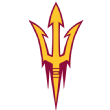
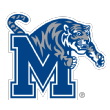
Original school: Arizona State (2015-16)
Any college quarterback who makes headlines for more than four years likely will draw comparisons to White. His college career seemed to span decades, even though it technically lasted only six seasons. White not only played for a long time, he also performed at a high level as a three-year starter for Memphis. He needed three and a half years to graduate from Arizona State, where he redshirted in 2015 before making a start in 2016. His ability to have longevity after the transfer helped him shape a legacy in Memphis. White set team records for wins by a starting quarterback (28), passing yards (10,690) and passing touchdowns (90). He eclipsed 3,200 pass yards and 25 pass touchdowns in all three seasons, while leading Memphis to two AAC championship game appearances, a league title and a Cotton Bowl appearance during the 2019 season.
White saw his passing average increase from 235.4 yards per game in 2018 to more than 300 yards per game in 2020. He had 27 games with more than one touchdown pass at Memphis and finished in the top-5 nationally in touchdown passes in every season there. Memphis went 28-11 with White as the starter. In 2020, he also earned the William V. Campbell Trophy, also known as the academic Heisman, after earning academic all-league honors in both the AAC and Pac-12.


Original school: East Carolina (2016-17)
Other than Burrow, no graduate transfer quarterback on this list carries greater celebrity status at his destination program than Minshew does at Washington State. Few knew who he was at ECU, where he passed for 2,140 yards with 16 touchdowns and seven interceptions in 2017. The Mississippi native initially committed to Alabama as a transfer, but instead opted for a chance to start under coach Mike Leach at Washington State. His decision paid off for both sides as Minshew earned Pac-12 offensive player of the year honors and became a sixth-round NFL draft pick of the Jacksonville Jaguars.
Minshew led the nation in passing average (367.6 yards per game) and ranked second in total pass yards (4,779), while setting single-season team records for both passing yards and completions (468). He won the Johnny Unitas Golden Arm award, was a finalist for the Walter Camp Player of the Year award and finished fifth in Heisman Trophy voting. Minshew had 11 300-yard passing games and six games of 400 pass yards or more. He also drew comparisons to Uncle Rico from “Napoleon Dynamite” and became a fan favorite with his ’70s-style look.


5. Jake Coker, Alabama (2014-15)
Original school: Florida State (2012-13)
There have been more memorable quarterbacks in the Saban era at Alabama, including Hurts and Tagovailoa, and Coker’s overall college career is unremarkable. But Coker always will have the 2015 season, his second at Alabama, when he helped the Tide to a national title and passed for 3,110 yards and 21 touchdowns in coordinator Lane Kiffin’s offense. The Mobile, Alabama native redshirted at Florida State in 2011 and spent two seasons playing first behind EJ Manuel and then Jameis Winston, who won the Heisman Trophy and guided the Seminoles to a national title in 2013. Weeks after the championship game, Coker signed with Alabama as a graduate transfer with two years of eligibility left.
Coker again held a reserve role in Tuscaloosa, playing behind Blake Sims in 2014 and appearing in five games, completing 38 passes for 403 yards and four touchdowns. He finally got his chance to shine in 2015 and went 14-0 as the Tide starter (he came off the bench in a loss to Ole Miss). Coker threw 10 touchdown passes and only two interceptions in his final nine games, and had a combined 621 pass yards and four touchdowns in CFP wins over Michigan State and Clemson as Alabama won its first title since 2012.


Original school: Texas (2016-18)
Buechele wasn’t the first quarterback to capitalize on the graduate transfer rule and go from Texas to SMU. Garrett Gilbert made the move after the 2011 season and had a very solid career with the Mustangs (6,460 pass yards, 36 touchdowns, 22 interceptions in two seasons). Buechele became an even better addition for SMU after transferring in from Texas. He eclipsed 7,000 pass yards (7,024) and fired 57 touchdowns in two seasons as the starter, as SMU went 17-6 and earned its first AP poll ranking since before the program received the death penalty.
After starting 19 games at Texas in 2016 and 2017, Buechele lost the top job to Sam Ehlinger, prompting a transfer after the 2018 season. Buechele immediately thrived in Sonny Dykes’ Air Raid-based offense at SMU, setting single-season team records for passing yards (3,929) and passing touchdowns (34) in 2019. He earned first-team All-AAC honors and was a Maxwell Award semifinalist. Buechele followed up the performance by finishing in the top 10 nationally in passing yards (3,095), passing average (309.5 yards per game), completions (24.2 per game) and total offense (320 yards per game) last season.


Original school: Eastern Washington (2012-14)
Adams only played 10 games for the Ducks during a 9-4 season that ended with a 31-0 blown lead and a loss to TCU in the Alamo Bowl. But he made the most of his field time that fall; Adams broke a finger in the season opener, and Oregon went on to lose several games with him out or limited, including the bowl — and backed up the hype as he made the move from FCS power Eastern Washington. Oregon was coming off an appearance in the inaugural CFP championship game and had been led by Heisman Trophy winner Marcus Mariota at quarterback. Adams, a two-time FCS All-America selection at Eastern Washington, only joined the Ducks right before preseason camp after retaking a math class that allowed him to complete his degree at EWU.
He completed 64.9% of his passes for 2,643 yards with 26 touchdowns and only six interceptions on 259 pass attempts. Adams shined down the stretch, passing for 1,865 yards and 21 touchdowns in guiding Oregon to six consecutive wins to end the regular season. He lit up USC for 407 yards and six touchdowns, and helped Oregon to a 38-36 win over No. 7 Stanford on the road. The Ducks’ season certainly could have turned out better, had Adams remained healthy throughout the fall.
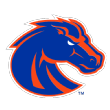
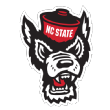
8. Ryan Finley, NC State (2016-18)
Original school: Boise State (2014-15)
NC State might never live down letting Wilson walk, but at least the program also benefited from the graduate transfer quarterback trend. In Finley, the Wolfpack gained a three-year starter who in 2017 helped the program to its first AP Top-25 finish since Wilson’s final season of 2010. Finley eclipsed 3,000 pass yards in all three seasons and saw his completion percentage increase by seven points from 2016 to 2018. NC State went 25-14 during his career with two bowl victories, and Finley set the team record for completion percentage (64.5), while ranking second in both passing yards (10,505) and completions (881), and fourth in touchdown passes (60).
A Phoenix native, Finley began his career at Boise State and redshirted in 2013 before recording 97 total pass attempts in 2014 and 2015. He graduated and then transferred to NC State, joining coordinator Eliah Drinkwitz, who the Wolfpack hired from Boise State. Finley passed for 3,059 yards and 18 touchdowns his first season, improved his touchdown-to-interception ratio (17-6) in 2017 and then fired 25 touchdowns during his final year in Raleigh.


Original school: Tennessee (2013-14)
Dan Marino, Tony Dorsett and Mike Ditka all played college ball at Pitt, but none was part of the highest-scoring offense in team history. Peterman will be remembered as the quarterback of that unit, which averaged 40.9 points per game and scored 532 total points in 2016. He passed for 2,855 yards and 27 touchdowns, finishing in the top 10 nationally in pass efficiency (163.4 rating), yards per completion (15.4) and yards per pass attempt (9.3). Peterman torched eventual national champion Clemson for 308 pass yards and five touchdowns as Pitt upset the Tigers in Death Valley. Playing in a league with Deshaun Watson, Lamar Jackson and other accomplished quarterbacks, Peterman led the ACC in pass efficiency.
His career began at Tennessee, where he redshirted in 2012 and then appeared in 11 games (two starts) with 43 pass attempts. After graduating, Peterman joined Pitt and started the final 11 games of the 2015 season, passing for 2,287 yards with 20 touchdowns and eight interceptions. His two seasons with the Panthers helped him become a fifth-round pick in the 2017 NFL draft, and he remains in the league as a reserve for the Las Vegas Raiders.

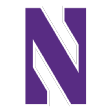
Original school: Indiana (2017-19)
There are several options for the final spot, including those who had better numbers than Ramsey’s at Northwestern last fall (1,733 pass yards, 12 touchdowns, eight interceptions). But few graduate transfers have helped a 3-9 team to a division title and an AP top-10 finish by addressing a blatantly obvious need. Northwestern was historically bad at quarterbacks in 2019, combining for 1,404 pass yards, six touchdowns and 15 interceptions, leading to the team’s first losing season since 2014 and worst overall season since 2002. In Ramsey, the Wildcats gained a proven Big Ten quarterback and a former team captain with 23 career starts and 6,581 pass yards with 42 touchdowns.
Ramsey had been good at Indiana, but the program saw a higher ceiling with Michael Penix Jr., who emerged as the starter in 2019 and would remain QB1 in 2020. Northwestern provided a virtually guaranteed opportunity to start, so Ramsey transferred and immediately upgraded the offense. He made key throws in big spots, providing a midseason burst of 200-yard passing performances and capping his career with 291 pass yards and three touchdowns, as well as 50 rushing yards and a touchdown, in a Citrus Bowl win over Auburn. Northwestern secured its first top-10 finish since 1995.
Honorable mention: Michigan‘s Jake Rudock (Iowa); Miami‘s D’Eriq King (Houston); West Virginia‘s Clint Trickett (Florida State); Boston College‘s Tyler Murphy (Florida); Texas A&M‘s Trevor Knight (Oklahoma).
